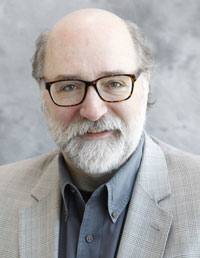Newsroom Archive
The Research and Evaluation (R&E) Center at John Jay College of Criminal Justice has received a grant of nearly $3 million from the Robert Wood Johnson Foundation to evaluate the efficacy and outcomes of the “Cure Violence” model of gun-violence reduction.
As part of the two-year project titled “Evaluating the Cure Violence model for gun-violence prevention,” the research team will study the key components of the model, the procedures used to implement it, and its effectiveness in reducing pro-violence social norms in high-risk communities. The Robert Wood Johnson Foundation selected the Center for Court Innovation (CCI) to implement the Cure Violence approach in two New York City neighborhoods, and the R&E Center will collect data in those communities and two comparison communities.
President Jeremy Travis touted the award, saying: “For those of us in the crime policy world, the fact that John Jay has been selected, with partners, to evaluate the Cure Violence initiative is a great vote of confidence in our ability to deliver a credible and rigorous evaluation of this high profile strategy.”
 Since Jeffrey Butts became Director of the R&E Center in 2010, the research team in the Center has raised $8 million in funding for various projects
Since Jeffrey Butts became Director of the R&E Center in 2010, the research team in the Center has raised $8 million in funding for various projects
“The Center is excited to work with CCI to implement high-quality Cure Violence programs,” said Butts. “John Jay will track implementation and measure effects in community in both the implementation site and in comparison communities all within New York City. This is a real vote of confidence in New York City and how the city is implementing a public health approach to violence prevention which has been supported by the City Council, public health, and the State.”
The Cure Violence model is a public health approach to ending gun violence that uses what are termed credible messengers, such as formerly incarcerated individuals, to intervene in gun-related violence, usually among youths ages 15 to 25. The Cure Violence model asserts that its public health approach can change high-risk individuals’ violent behavior through specifically-targeted mentoring from “violence interrupters.” Using such an approach, gun violence reduction can be achieved without individuals having to be embroiled in the legal system.
 Inside JJC (Faculty & Staff)
Inside JJC (Faculty & Staff) Technology Services Status
Technology Services Status

